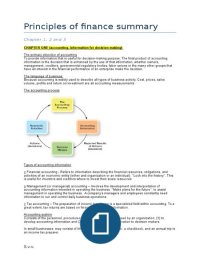Samenvatting
Summary Principles of finance and accounting ch. 1, 2 and 3
- Instelling
- Hogeschool Rotterdam (HR)
Finance and accounting summary chapter 1, 2 and 3, this summary is definitely worth its money, easily to understand the content and pass the exam
[Meer zien]





